How To Apply Chicken Wire To Cabinets
The most common use for chicken wire is for making chicken coops. But did you know, in the past, chicken wire was often used on furniture?
In the good ol' days, before modern day food storage and refrigeration, poultry netting was commonly used on hutch/pantry doors. The purpose was to let fresh air circulate around the stored root vegetables while providing a barrier to keep them in place.
Today we have better ways of storing and preserving our food, but the 'look' of this country charm furniture has made a trendy come back.
Do an online search and you'll find designer shops and furniture craftsman charging between $1500-$8000 for furniture adorned with chicken wire. You'll also see trendy interior designers and home decorating experts sharing over17,000 chicken wire inspired pieces on popular sites likeHouzz.
If you've been following my blog or FB page, you know I recently re-styled a dining hutch by replacing all the glass with chicken wire.
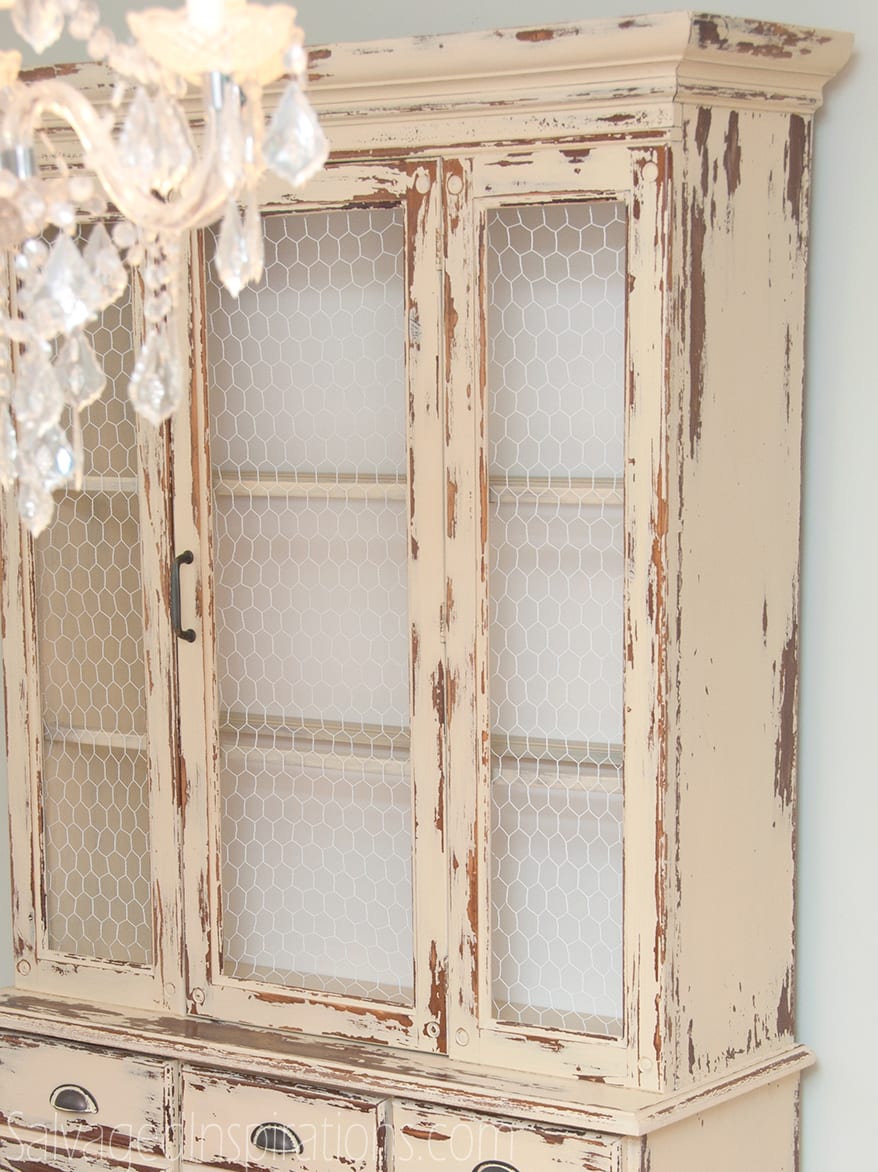
I love this country charm look!
The chicken wire adds visual interest by introducing pattern and color. I had so much fun working on this piece (cuts, scratches and all) that I'm currently working on another.
Although the original post for the above china cabinet is on Milk Painting Laminate, I've had quite a few questions asking how I installed the chicken wire. I love hearing from you and you've been giving me some great blog post ideas… so thank-you and keep those questions coming!
So here we go… here's what I learned…
When you're looking to buy chicken wire, keep in mind it is also called poultry netting, hardware cloth, hex netting or mesh wire. It's made of galvanized steel wire which comes in various sizes.
I bought mine from Home Hardware but it's easily found online, at Home Depot, Lowes, farm supply stores, or even Walmart in the garden section. In most locations it can be purchased already packaged, but some stores offer "off the roll". When you purchase off the roll, you can buy small amounts, just the right amount you will need for your furniture project.
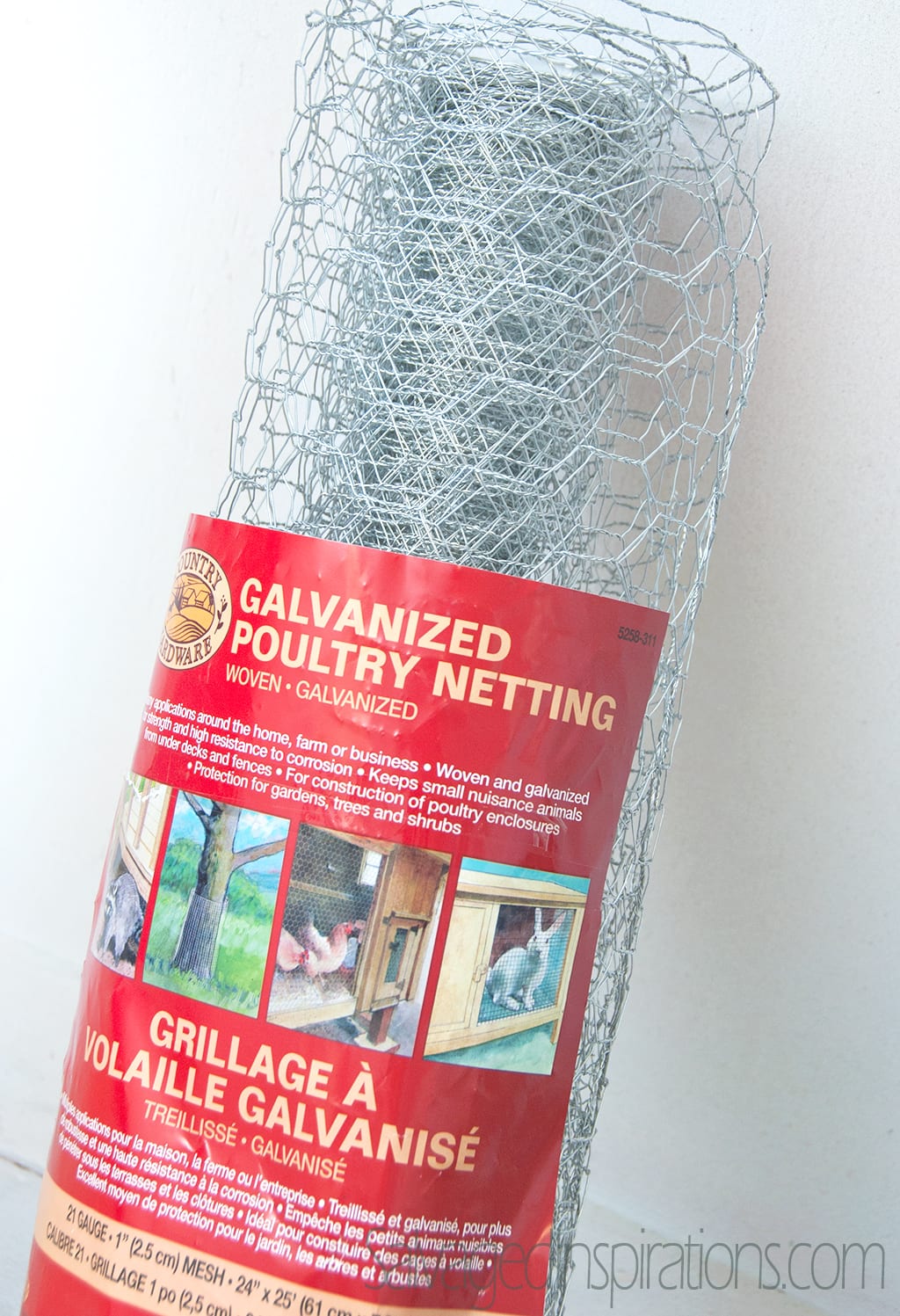
After I shocked the associate at the Home Hardware store (he was thoroughly amused I was going to use it on a china cabinet!), I brought the chicken wire home and got started. I removed the glass on the cabinet and measured each panel. Measured twice so I only had to cut once. 😉
To determine how much wire needs to be cut for each panel, you can also use the original glass as a template. Either way, measure and cut an extra 1/2-1 inch all around when you cut the wire.
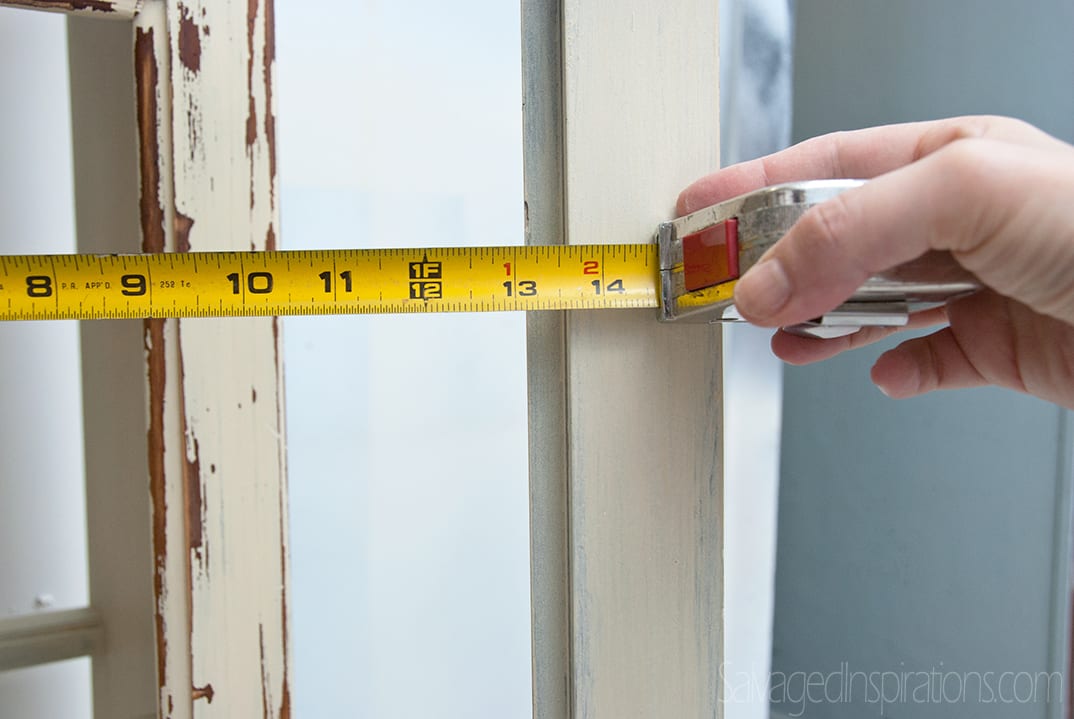
Okay…here are my warning and safety tips… because I care about you!
Chicken wire is sharp and unruly to work with. It curls up, coils up, and when you least expect it, scratches you up. I was bleeding.
Safety first right? I decided to stop what I was doing. I came upstairs to my office to watch a few YouTube Vids on how to cut this wire safely. When I went back down to my studio, the process was much safer and easier.
This simplest way for me to measure and cut was to unroll the wire flat on the floor and use paint cans to hold each end down.
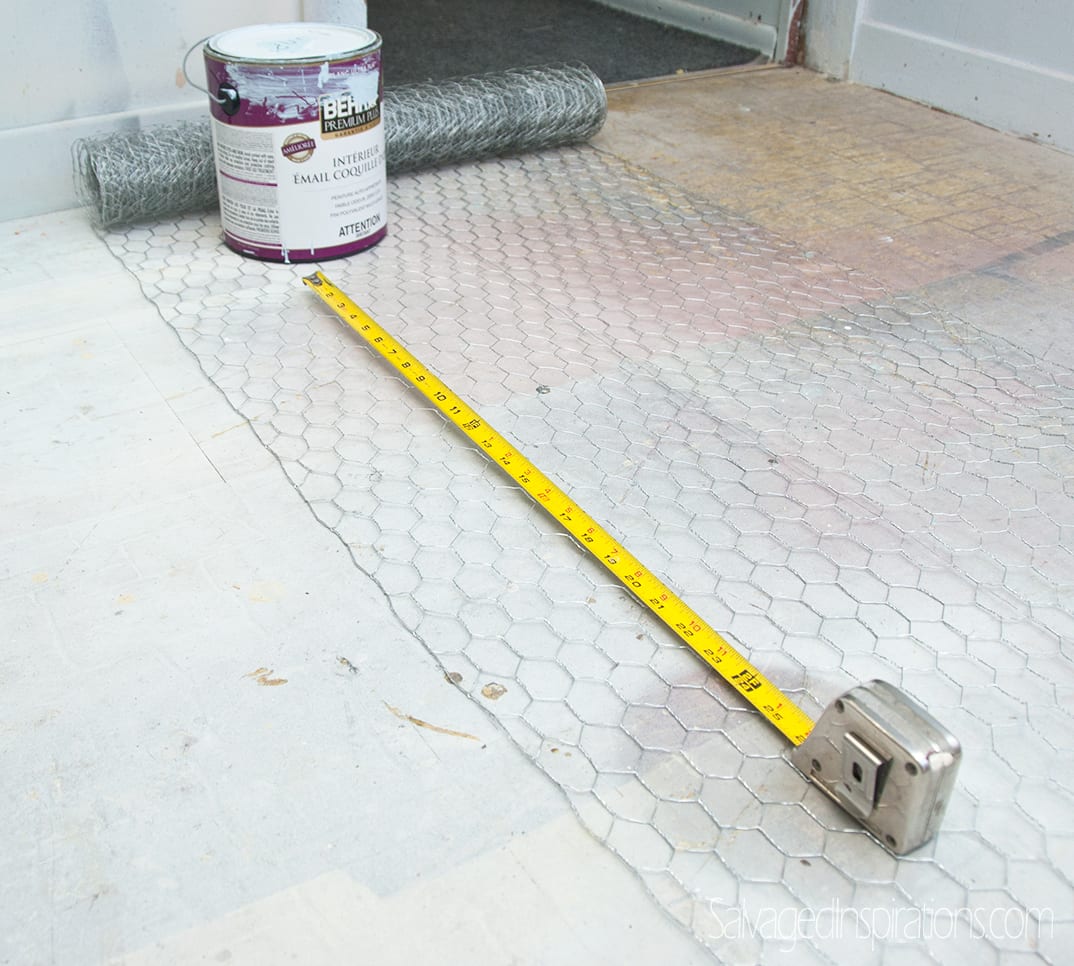
I took a good pair of wire cutters and started to cut across at the appropriate length I measured.
A safe way to cut the chicken wire is it to keep your wire cutters between at a 45-90 degree angle so your hand is ABOVE the wire rather than close to it.
Also working the cut backwards so your hand is always above the UNCUT portion of the wire rather than the CUT portion of the wire helps prevent scrapes and cuts. A protective pair of work gloves isn't a bad idea either.
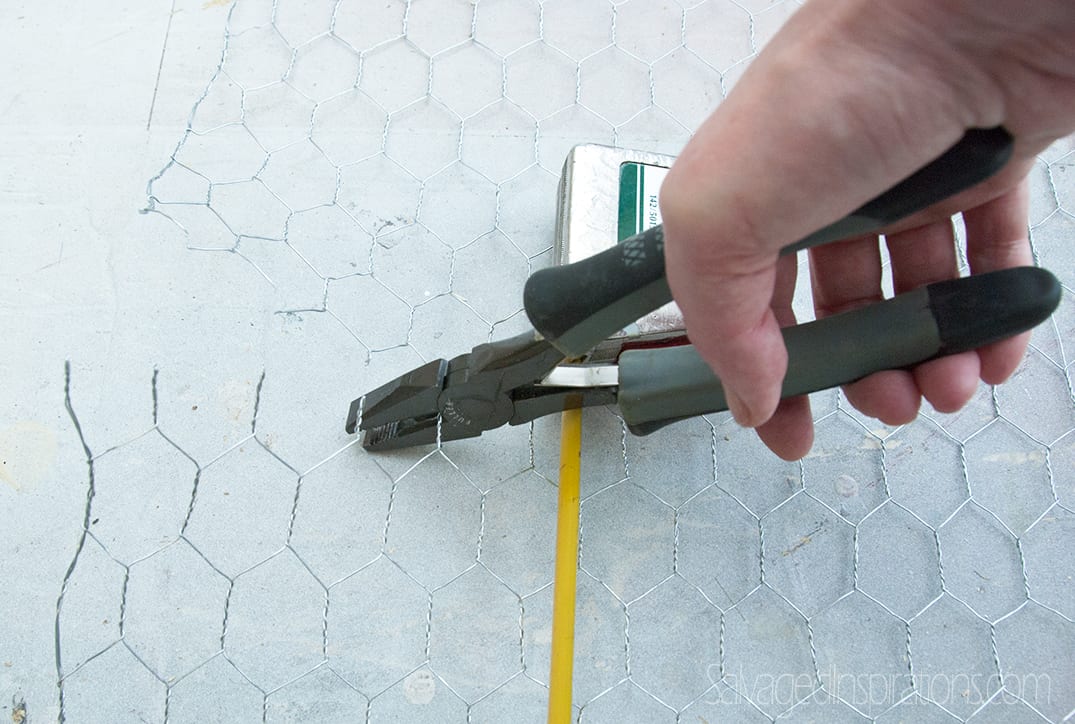
After all three of my pieces of my chicken wire were cut to the correct size, I spray painted the chicken wire white to match the back of the cabinet.
Chicken wire CAN be painted to match your piece. The simplest way to paint it is to use spray paint. Spray painting will eliminate any drips or paint build up that would most likely happen painting with a brush.
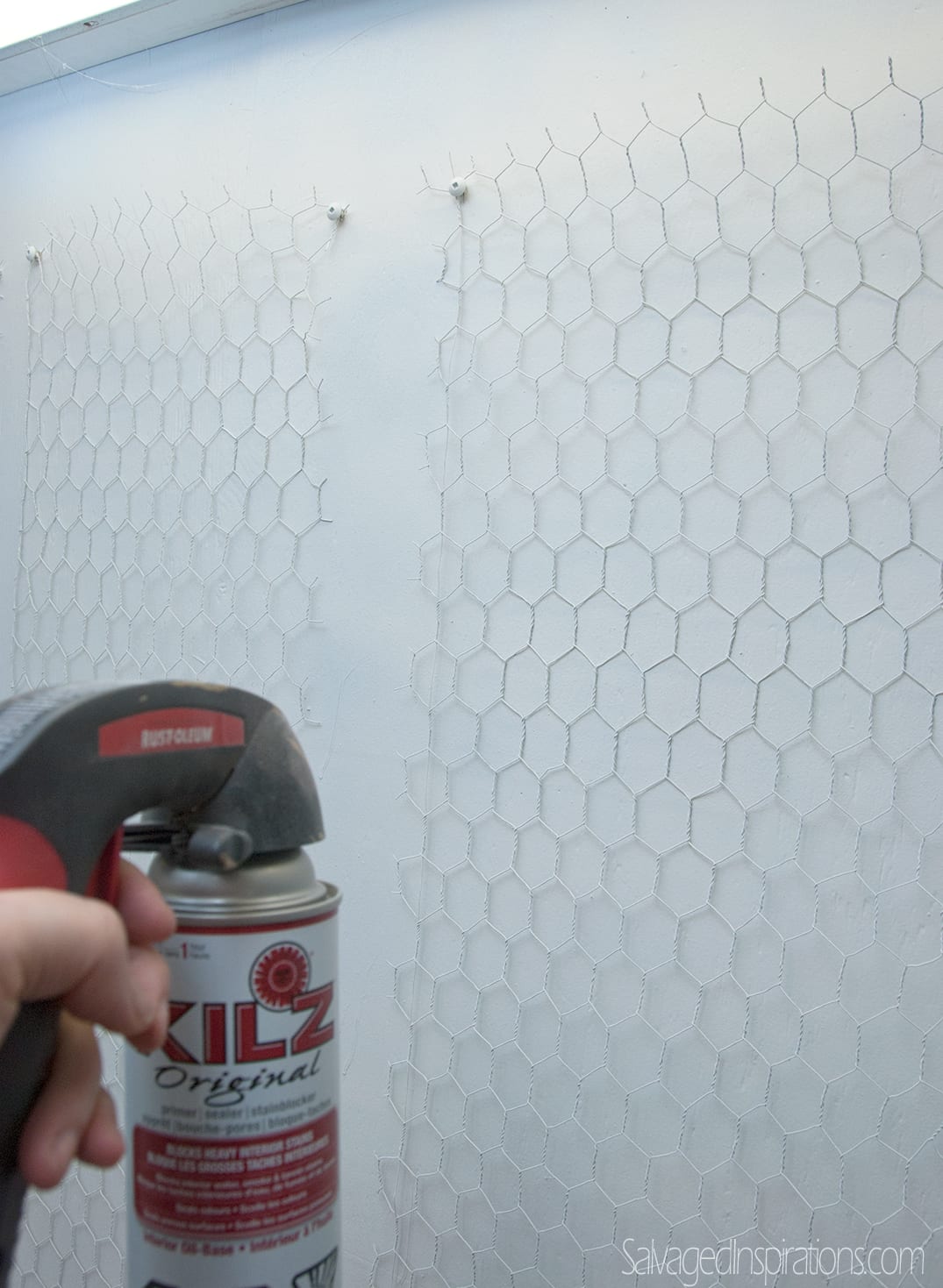
Once the paint was dry, it was time to install it onto my furniture. I positioned the chicken wire exactly where I wanted it on the back of the door frame and drilled in corner screws to hold it in place. Then, with my pneumatic staple gun and 3/8″ staples, I securely stapled the wire all around the perimeter.
Any staple gun will work!
… and yes, as you can see below, I take waaaay better images when I'm not working with one hand while taking pictures with a camera in the other. 😉

Chicken wire stretches. As you're stapling, pull and stretch the wire taunt and watch to make sure the hex netting looks nice and even. You don't want to finish installing, then look at your wire only to have it all wavy and crooked.
Once the chicken wire was installed, I took a pair of needle nose pliers and twisted all the sharp wire in on itself. This looks professional, but more importantly, it's much safer when opening and closing the doors.
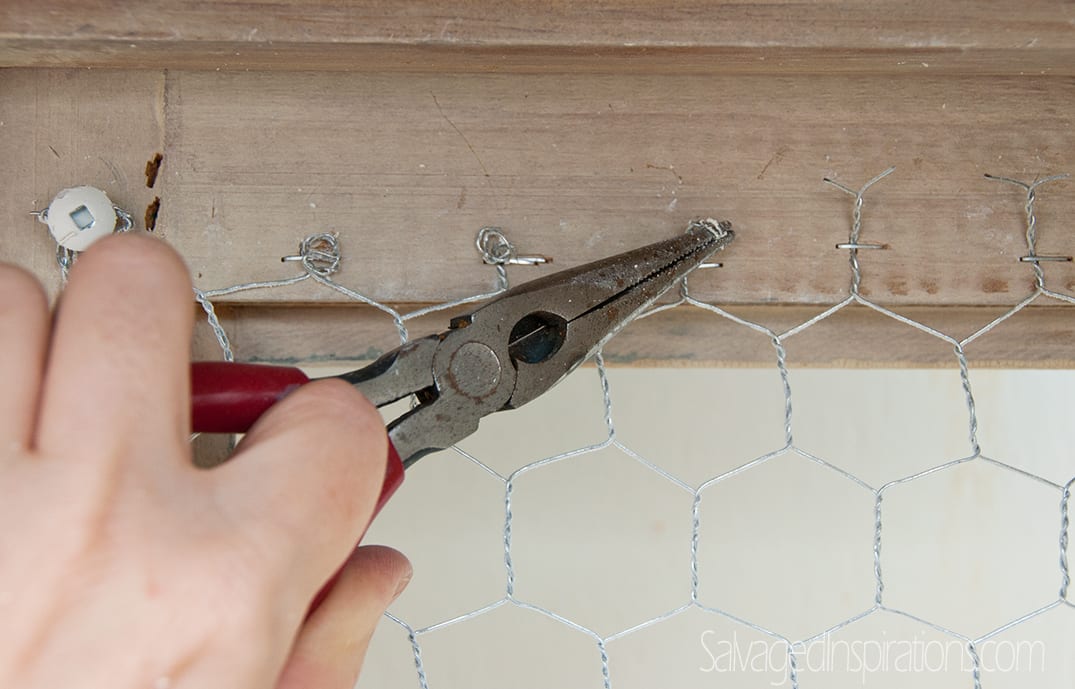
Here's what the entire back looked like before it was assembled onto the buffet. No sharp edges and all the wire was pulled taunt and even.
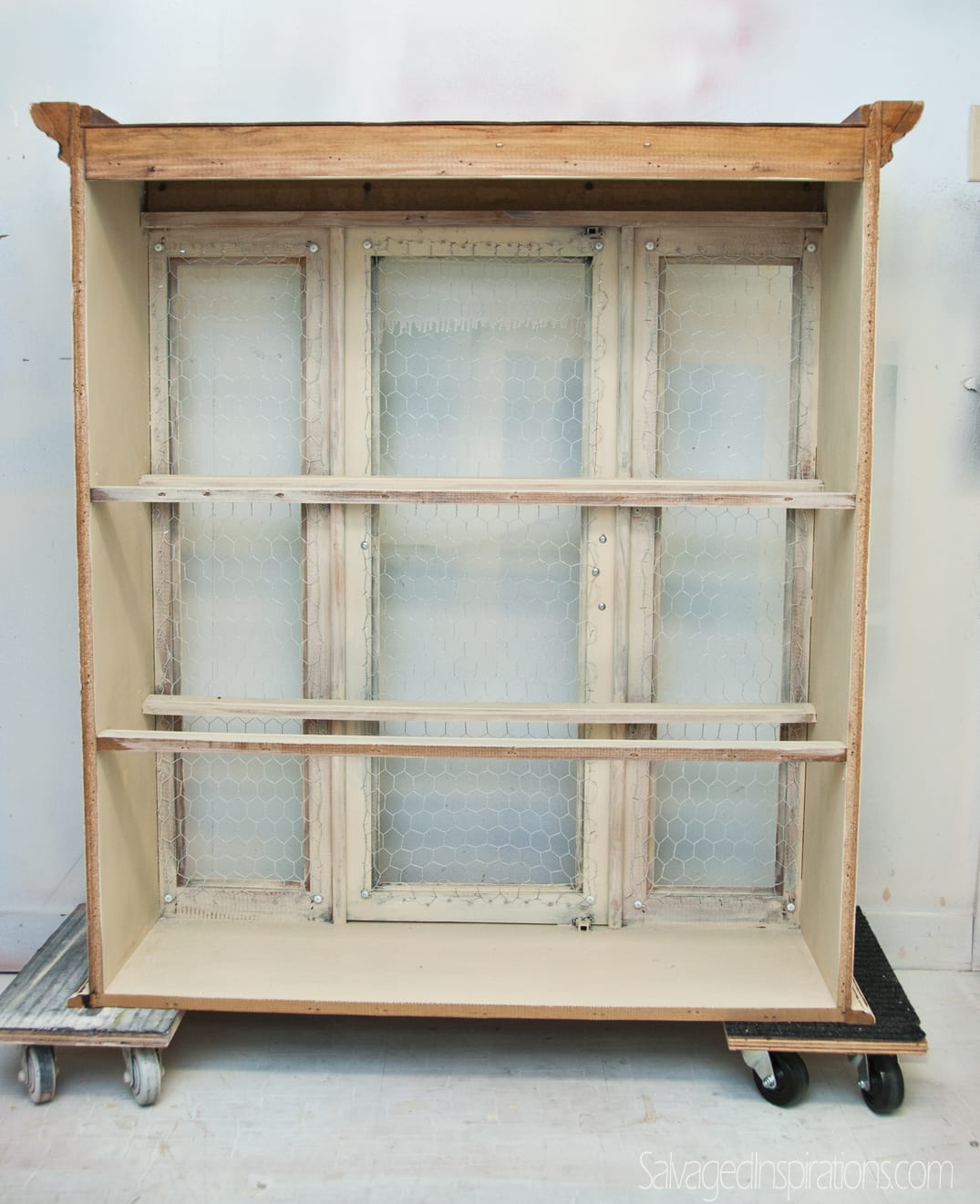

You can take a peek at the full before and after of this china cabinet here, and be sure to drop by in the next day or two for another re-styled chicken wire hutch! She's a beauty in red!
And a note for all you furniture painters who have a business, hutches with chicken wire are fast sellers! For those of you who create and re-style for your own home, salvaging an old cabinet/hutch and replacing the glass with chicken wire makes for a great past-meets-present trendy focal piece!
I hope you're having an amazing week and you're doing what you enjoy, whatever that may be.
Happy Painting,
Denise x
Reader Interactions
How To Apply Chicken Wire To Cabinets
Source: https://salvagedinspirations.com/replace-glass-with-chicken-wire-the-safe-way/
Posted by: pohllectifes.blogspot.com

0 Response to "How To Apply Chicken Wire To Cabinets"
Post a Comment